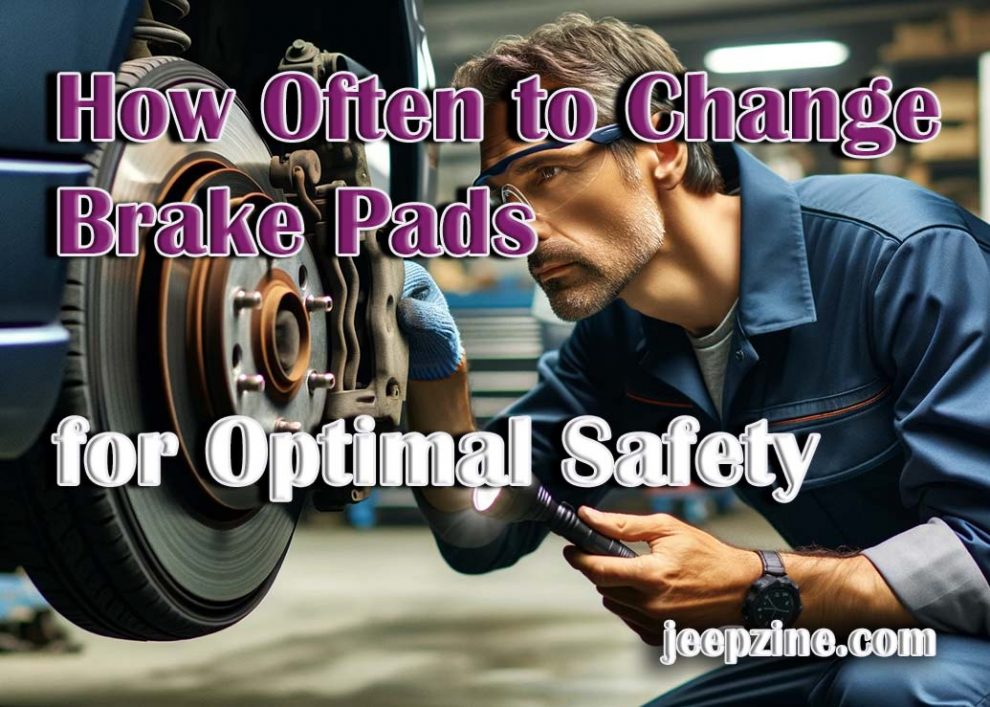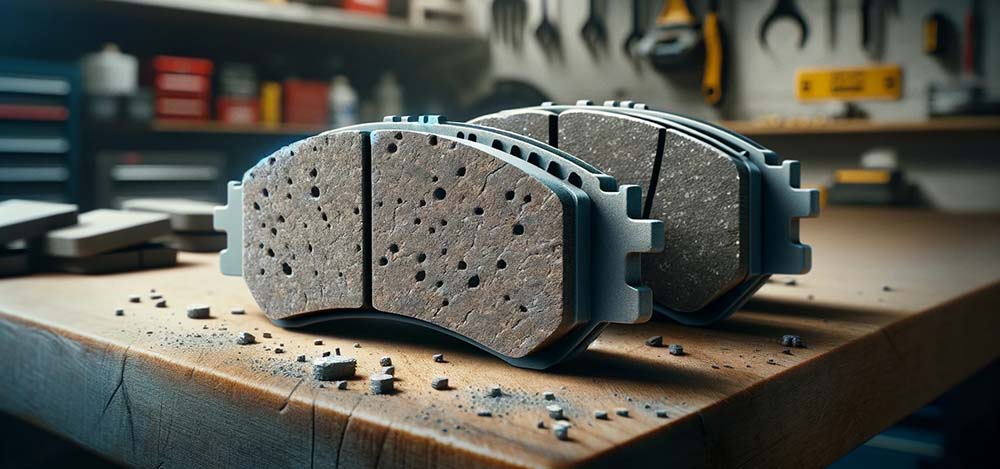Brake pads are essential for the safety and efficiency of your vehicle’s braking system, acting as the crucial interface between the brake caliper and the rotors to create the friction needed to reduce your vehicle’s speed. Over time, this constant friction causes brake pads to wear down, diminishing their ability to stop the car effectively. This wear can lead to a decrease in braking efficiency, potentially endangering the safety of the vehicle’s occupants and others on the road. Regular monitoring and timely replacement of brake pads are imperative to maintaining vehicle safety. Ignoring the condition of your brake pads can lead to reduced braking performance, increased stopping distances, and may also cause damage to the brake rotors, leading to more significant and costly repairs. Therefore, understanding the role of brake pads and the importance of their maintenance is the first step towards ensuring your vehicle remains safe and reliable on the road.
The Importance of Regular Brake Checks
Ensuring the safety and reliability of your vehicle requires regular brake inspections to identify wear and tear on brake pads and other braking system components. Automotive experts recommend that a thorough examination of the braking system, including brake pads, rotors, and fluid, should be conducted during each oil change or at least twice a year. These regular checks are critical for early detection of potential issues, allowing for timely maintenance or replacements. By catching problems early, vehicle owners can avoid more serious complications that might arise from worn or damaged brake components. Regular brake inspections are a preventative measure that helps maintain the vehicle’s braking efficiency, ensuring it remains safe and reliable for driving under various conditions.
Signs Your Brake Pads Need Replacing
Understanding when to replace your brake pads is crucial for maintaining your vehicle’s braking efficiency and safety. The key signs indicating the need for a replacement include:
-
Squealing or Screeching Noises: These sounds often emerge when the brake pads have worn down significantly and are one of the most common indicators that the pads need attention.
-
Increased Stopping Distances: A noticeable increase in the distance it takes for your vehicle to come to a complete stop is a clear sign of worn brake pads.
-
Softer Brake Pedal: If the brake pedal feels softer than usual or requires more pressure to engage the brakes, it could indicate that the brake pads are wearing thin.
-
Visible Wear: Inspecting the thickness of the brake pads through the wheel spokes can offer a visual cue. Brake pads thinner than ¼ inch should be replaced to maintain optimal braking performance.
These signs serve as important alerts for drivers to schedule a brake inspection and possible pad replacement to ensure the vehicle remains safe to operate.
How Often to Change Brake Pads
The frequency with which you should change your brake pads varies significantly, generally falling between every 30,000 to 70,000 miles. This range depends on several factors, including driving habits, the type of vehicle, and the quality of the brake pads used. For example, aggressive driving styles, frequent stops, and driving in heavy traffic or harsh environmental conditions can all lead to accelerated brake pad wear. Similarly, the material of the brake pads – whether ceramic, metallic, or organic—can affect their lifespan and performance. It’s crucial for drivers to monitor their brake pads’ condition and be aware of the factors that contribute to their wear to determine the appropriate time for replacement.
Factors Affecting Brake Pad Wear
Several factors can influence the rate at which brake pads wear down, necessitating their replacement:
-
Driving Habits: Aggressive braking and frequent stops, particularly at high speeds or in stop-and-go traffic, can significantly shorten the lifespan of brake pads.
-
Environmental Conditions: Driving in mountainous areas with frequent downhill braking or in urban environments with lots of traffic lights and stop signs can increase brake pad wear.
-
Brake Pad Material: The composition of brake pads (ceramic, metallic, or organic) plays a crucial role in their durability and performance characteristics. Each material offers different benefits and wear rates, affecting how often replacements are needed.
Choosing the Right Brake Pads for Your Vehicle
Selecting the correct brake pads is crucial for ensuring optimal braking performance and longevity. This decision should be informed by the driver’s typical driving conditions, vehicle type, and manufacturer’s recommendations. For vehicles that are subjected to heavy-duty use, such as the F250 Super Duty, choosing brake pads and rotors that are designed to withstand higher levels of wear and tear is essential. For instance, the Best Brake Rotors for F250 Super Duty are engineered to match the vehicle’s high performance and heavy-duty requirements, providing superior braking power and durability. Making an informed choice about brake components can significantly enhance the safety and performance of your vehicle, ensuring it remains capable and reliable under various driving conditions.
Conclusion
Understanding how often to change brake pads is essential for maintaining vehicle safety and performance. This critical maintenance task varies based on driving patterns, vehicle type, and brake pad material, highlighting the importance of personalized care for each vehicle. Regular inspections allow for the early detection of wear, enabling timely replacements that ensure the braking system functions effectively. Proactive maintenance, tailored to the unique demands of your driving habits and vehicle specifications, plays a pivotal role in safeguarding against potential braking issues. Being vigilant about the condition of your brake pads and seeking professional guidance for maintenance schedules and replacement ensures your vehicle remains safe and dependable on the road. A commitment to regular brake system checks and adhering to recommended maintenance intervals not only enhances your safety but also preserves the integrity and performance of your vehicle over time. In the realm of automotive care, the diligence paid to brake pad maintenance is a direct investment in your vehicle’s operational safety and longevity.


